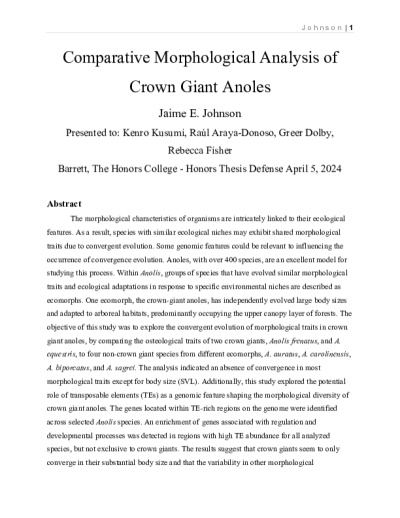Filtering by
- All Subjects: Cellular Biology
- All Subjects: Evolution
- Creators: Kusumi, Kenro
- Creators: Roberson, Robert


The first chapter demonstrates the capability of two strains of Scenedesmus acutus to grow in ultra-high-density (>10 g L-1 dry weight biomass) cultures in flat panel photobioreactors for year-round production in the desert Southwest with record volumetric biomass productivity. The advantages and efficiency of high-density cultivation are discussed. The second chapter focuses on uptake and utilization of the volatile components of wastewater: ammonia and carbon dioxide. Scenedesmus acutus was cultured on wastewater from both municipal and agricultural origin and was shown to perform significantly better on flue gas as compared to commercial grade CO2 and just as well on waste nutrients as the commonly used BG-11 laboratory culture media, all while producing up to 50% lipids of the dry weight biomass suitable for use in biodiesel. The third chapter evaluates the feasibility of using gravity sedimentation for the harvesting of the difficult-to-separate Scenedesmus acutus green algae biomass followed by microfluidization to disrupt the cells. Lipid-extracted biomass was then studied as a fertilizer for plants and shown to have similar performance to a commercially available 4-6-6 fertilizer. Based on the work from these three chapters, a summary of modifications are suggested to help current and future microalgae companies be more competitive in the marketplace with traditional agricultural commodities.


Agassiz’s desert tortoise (Gopherus agassizii) is a long-lived species native to the Mojave Desert and is listed as threatened under the US Endangered Species Act. To aid conservation efforts for preserving the genetic diversity of this species, we generated a whole genome reference sequence with an annotation based on deep transcriptome sequences of adult skeletal muscle, lung, brain, and blood. The draft genome assembly for G. agassizii has a scaffold N50 length of 252 kbp and a total length of 2.4 Gbp. Genome annotation reveals 20,172 protein-coding genes in the G. agassizii assembly, and that gene structure is more similar to chicken than other turtles. We provide a series of comparative analyses demonstrating (1) that turtles are among the slowest-evolving genome-enabled reptiles, (2) amino acid changes in genes controlling desert tortoise traits such as shell development, longevity and osmoregulation, and (3) fixed variants across the Gopherus species complex in genes related to desert adaptations, including circadian rhythm and innate immune response. This G. agassizii genome reference and annotation is the first such resource for any tortoise, and will serve as a foundation for future analysis of the genetic basis of adaptations to the desert environment, allow for investigation into genomic factors affecting tortoise health, disease and longevity, and serve as a valuable resource for additional studies in this species complex.
Data Availability: All genomic and transcriptomic sequence files are available from the NIH-NCBI BioProject database (accession numbers PRJNA352725, PRJNA352726, and PRJNA281763). All genome assembly, transcriptome assembly, predicted protein, transcript, genome annotation, repeatmasker, phylogenetic trees, .vcf and GO enrichment files are available on Harvard Dataverse (doi:10.7910/DVN/EH2S9K).


